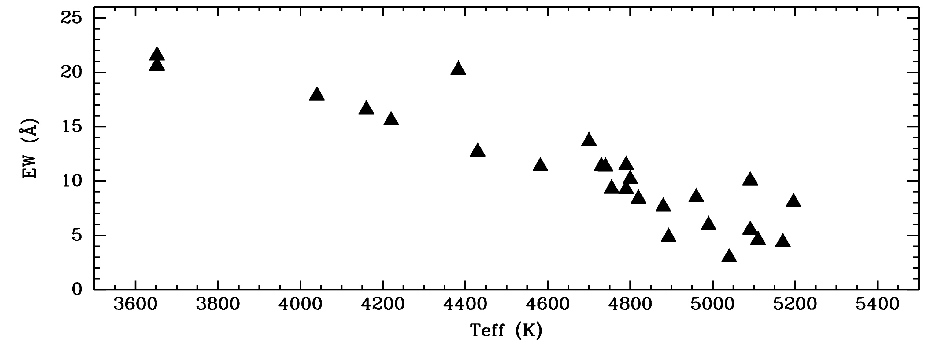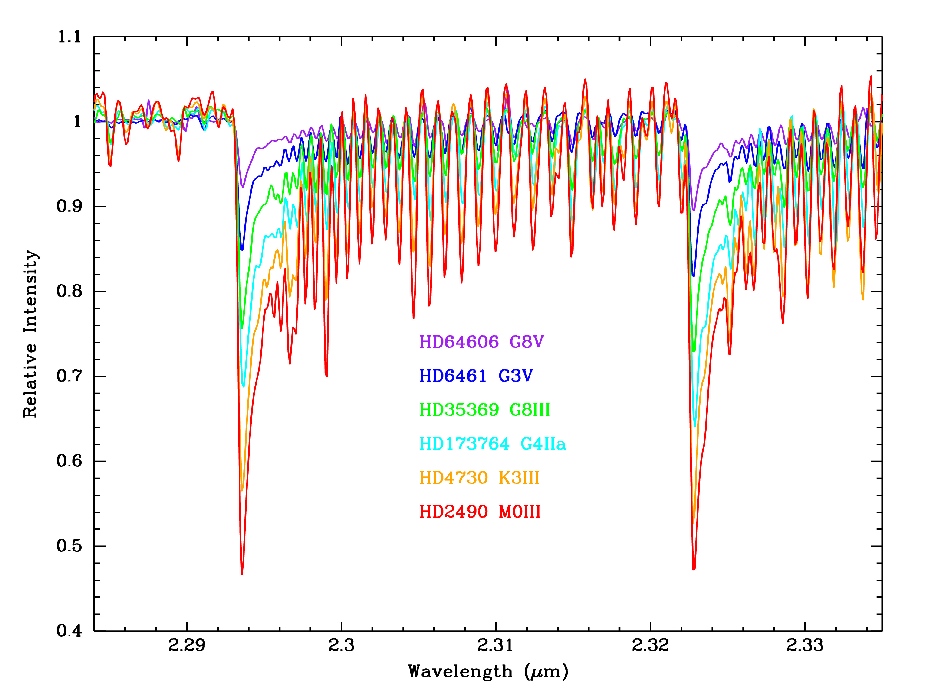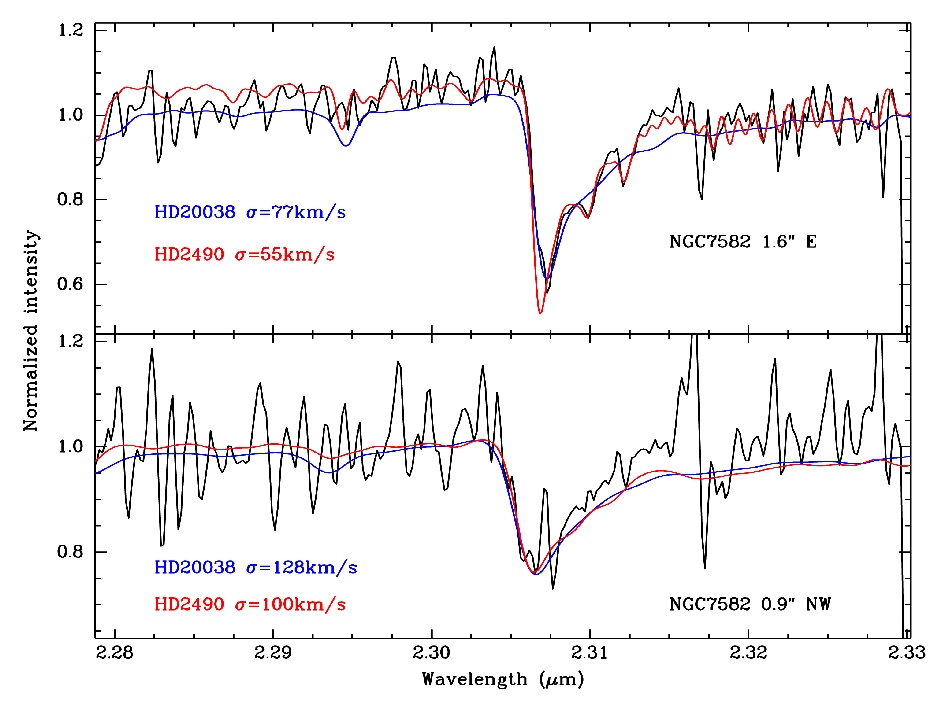In order to ilustrate the use of the templates, we selected actual data
from a representative Gemini programme, GS-2005B-Q-65, a
GNIRS/IFU+111l/mm observation of the Seyfert galaxy NGC7582, centred at
2.24
μm. The data have been reduced by R. Riffel as part of
his PhD thesis, and a full description of the reduction procedure and
analysis will be presented in the final publication. The sample spectra
used here were extracted from a couple of spatial positions in the
final datacube simply to ilustrate the use of the templates. The task
stsdas.contrib.redshift.xcor was
used to calculate the cross-correlation.
Two stars were used to ilustrate the effect of the template EW in the
fit: HD20038, an F7IIIw star with EW(CO 2.322
μm)~8Å;
and HD2490, an M0III star with EW(CO 2.322
μm)~22Å. The
result is shown in the figure below. PLEASE NOTE THAT THE ABSOLUTE
VALUES OF THE VELOCITY DISPERSION ARE UNCERTAIN - the purpose of the
figure is to illustrate the effect of using different templates, a much
more complete treatment of the errors is needed to give any further
meaning to the results than the expected one: the larger the EW of the
CO band in the template, the lower the resulting velocity dispersion
required to reproduce the galaxy spectrum.





